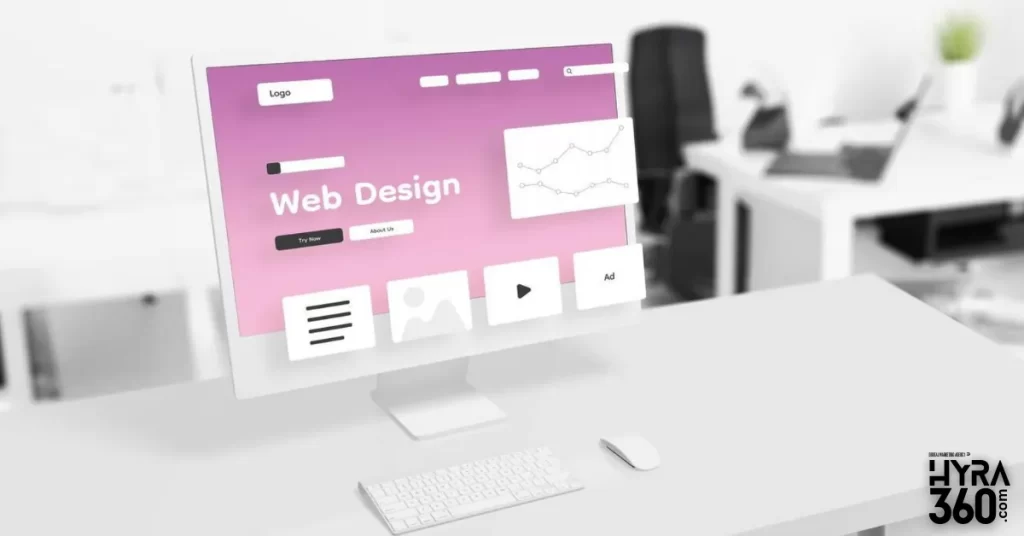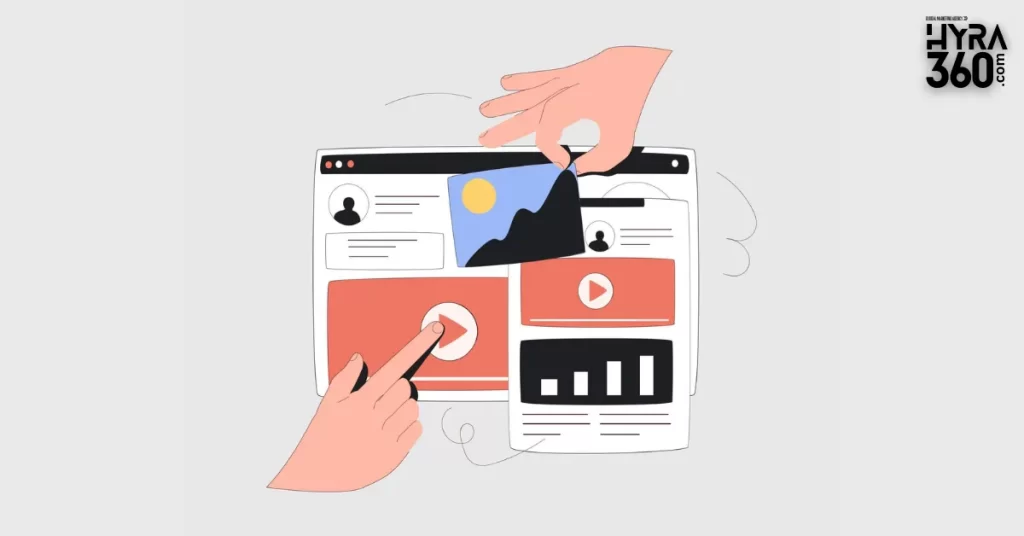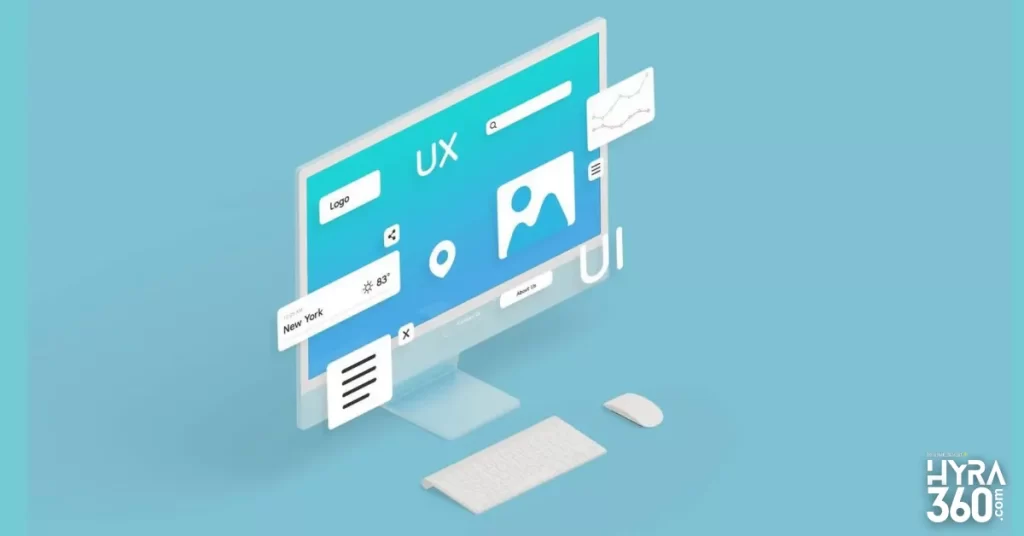Introduction
Real estate websites play a pivotal role in the digital era, serving as essential tools for buyers, sellers, and agents. The user experience (UX) and user interface (UI) design of these websites significantly impact lead generation, business success, and customer satisfaction. In this comprehensive guide, we will delve into the intricacies of creating, updating, and optimizing UX/UI design for real estate websites, drawing insights from industry best practices, case studies, and expert recommendations.
On this page
Understanding UX/UI Design for Real Estate Websites
What is UX/UI Design and its Role in Real Estate?
UX/UI design encompasses the process of enhancing user satisfaction by improving the usability, accessibility, and desirability provided in the interaction between the user and the website. In the context of real estate websites, effective UX/UI design is crucial for creating an intuitive, visually appealing, and informative platform that caters to the diverse needs of buyers, sellers, and agents. By prioritizing user-centric design principles, real estate websites can elevate the overall user experience, leading to increased engagement and conversions.
Principles of User-Centered Design
A user-centered approach to design emphasizes collaboration and feedback from clients, enabling an iterative process for continuous improvement. By incorporating user feedback and insights, real estate websites can evolve to meet the evolving needs and preferences of their target audience. This iterative approach ensures that the design remains aligned with user expectations and industry trends, fostering a dynamic and responsive user experience.
Research and Data Collection
Incorporating real data from research, surveys, and interviews is paramount in informing the design process. By gaining a deep understanding of user behaviors, preferences, and pain points, real estate websites can tailor their UX/UI design to address specific user needs effectively. This data-driven approach ensures that design decisions are rooted in empirical insights, enhancing the relevance and effectiveness of the website’s interface and functionality.

Best Practices for Real Estate Website UX/UI Design
1.Focus on Content and Visuals
Compelling visual content, including high-quality images and engaging videos, serves as a cornerstone of effective real estate website design. By strategically prioritizing visual content and employing a minimalistic approach, websites can create an immersive and visually captivating experience for users, fostering a deeper connection with property listings and real estate services.
2.User-Friendly Navigation and Search Tools
Intuitive navigation and search functionality are pivotal in guiding users through the website seamlessly. By streamlining the search process and implementing user-friendly filters, real estate websites can empower users to explore property listings with ease, enhancing the overall user experience and facilitating efficient property discovery.
3.Mobile Optimization and Loading Speed
Optimizing real estate websites for mobile devices is essential in catering to the growing base of smartphone users. Additionally, enhancing loading speed and performance ensures that users can access information swiftly, minimizing wait times and maximizing user engagement.
4.Building Trust and Personalizing User Experience
Designing real estate websites to build trust and credibility with users is fundamental in establishing a strong rapport with potential buyers and sellers. Personalizing the user experience through tailored recommendations and interactive features fosters a sense of individualized attention, elevating the overall user satisfaction and engagement.
5.User Testing and Continuous Improvement
Conducting user testing and embracing a culture of continuous improvement are integral to refining the UX/UI design of real estate websites. By soliciting user feedback and monitoring user interactions, websites can identify areas for enhancement and implement iterative design updates, ensuring that the platform remains aligned with user expectations and industry standards.
6.Interactive Website Features
Incorporating interactive features, such as virtual tours, interactive maps, and property comparison tools, can enhance the user experience and facilitate efficient property discovery. By providing users with a range of interactive tools and features, real estate websites can create a dynamic and engaging platform that caters to diverse user needs and preferences.
7.Content-Centered Design
Prioritizing visual content and strategic placement is essential in creating a content-centered real estate website. By emphasizing compelling visuals and minimizing clutter, websites can create an immersive and engaging platform that fosters a deeper connection with property listings and real estate services.
8.High-Quality Images in Web Design
High-quality images are essential in creating a visually appealing and informative real estate website. By showcasing property listings with professional photography, websites can enhance the user experience and facilitate informed decision-making. Additionally, incorporating 3D walkthroughs and videos can provide users with a more immersive and engaging experience, elevating the overall user satisfaction and engagement.
9.A/B Testing.
Conducting A/B testing on search functionality and filters can provide valuable insights into user preferences and behaviors, informing design decisions and facilitating continuous improvement.
10.Pop-up Forms and Ads
Minimizing pop-up forms and ads is essential in creating a user-friendly real estate website. By reducing clutter and distractions, websites can create a streamlined and immersive platform that enhances the overall user experience and facilitates efficient property discovery.

Addressing Common UX Challenges for Real Estate Websites
Improving UX for Users with Disabilities
Ensuring accessibility and inclusivity for users with disabilities is a critical aspect of UX/UI design. By implementing features that accommodate diverse user needs, real estate websites can create an inclusive and welcoming environment for all users, fostering a sense of equity and accessibility.
Presenting Large Amounts of Data
Strategies for presenting complex data in a user-friendly manner are essential for real estate websites. By employing intuitive data visualization techniques and structured information architecture, websites can present extensive property details in a digestible and engaging format, enhancing the overall user experience and facilitating informed decision-making.
Improving UX for Users Unfamiliar with Real Estate
Tailoring the UX/UI design to cater to users who are not well-versed in the real estate industry is pivotal in creating an approachable and informative platform. By providing educational resources, clear explanations, and user-friendly tools, real estate websites can empower novice users to navigate the platform with confidence, fostering a supportive and inclusive user experience.

Updating and Redesigning Real Estate Website Design
Discovery, Investigation, and Design Phases
The process of updating and redesigning real estate website design involves comprehensive customer journey mapping and in-depth investigation to identify areas for improvement. By visualizing and prototyping design changes in collaboration with clients, websites can undergo a transformative redesign process that aligns with user needs and industry standards.
Customer Journey Mapping
Customer journey mapping is a valuable tool for identifying user pain points and areas for improvement in real estate website design. By visualizing the user experience and identifying areas for enhancement, websites can create a more intuitive and engaging platform that caters to diverse user needs and preferences.
Implementation and Redesign Phase
Putting design changes into action and continuously monitoring and updating the website are crucial steps in the redesign phase. By ensuring seamless implementation and ongoing refinement, real estate websites can evolve to meet the evolving needs and expectations of their users, fostering a dynamic and responsive user experience.
Showcasing Aspirity Experience and Portfolio
Aspirity’s expertise in UX/UI design for real estate websites is exemplified through client case studies and impactful solutions. By showcasing real-world examples of successful UX/UI design implementations, Aspirity demonstrates its commitment to delivering exceptional user experiences and innovative design solutions in the real estate industry.

How to Avoid Design Mistakes
Acknowledging the Complexity of UX/UI Design
UX/UI design is a complex and multifaceted process that requires a deep understanding of user needs and preferences. By acknowledging the complexity of design and embracing a user-centric approach, designers can create a more intuitive and engaging platform that caters to diverse user needs and preferences.
Encouraging Professional Assistance from Experts
Seeking professional assistance from UX/UI design experts, such as Aspirity, can provide valuable insights and guidance in creating a successful real estate website. By leveraging the expertise and experience of industry professionals, designers can create a more effective and engaging platform that maximizes user engagement and business success.
Showcasing Aspirity's Expertise and Portfolio
Aspirity’s expertise in UX/UI design for real estate websites is exemplified through client case studies and impactful solutions. By showcasing real-world examples of successful UX/UI design implementations, Aspirity demonstrates its commitment to delivering exceptional user experiences and innovative design solutions in the real estate industry.
SUMMARY
In conclusion, mastering UX/UI design for real estate websites is a multifaceted endeavor that encompasses user-centric principles, data-driven insights, and continuous improvement. By embracing best practices, addressing common challenges, and showcasing expertise, real estate websites can provide a superior user experience for all stakeholders involved. As the digital landscape continues to evolve, the importance of UX/UI design in real estate websites remains paramount, shaping the future of user engagement and business success.
This comprehensive guide aims to provide valuable insights and actionable strategies for mastering UX/UI design in the real estate industry, ultimately leading to improved user experience and business success.
By incorporating best practices, addressing common challenges, and showcasing expertise, real estate websites can provide a superior user experience for all stakeholders involved. This comprehensive guide aims to provide valuable insights and actionable strategies for mastering UX/UI design in the real estate industry, ultimately leading to improved user experience and business success.



























